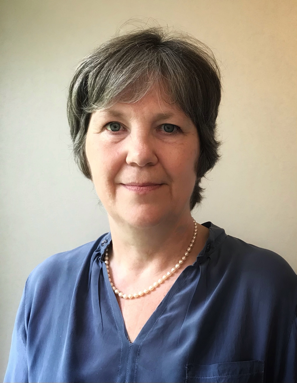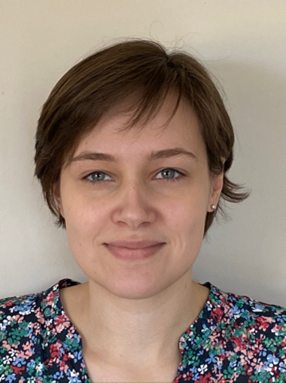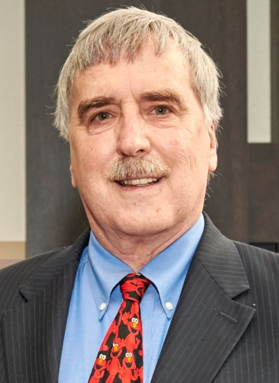Tutorials
- Tutorial 1 – “Combining BPMN with Artefact-Centric Business Process Modeling”
- Tutorial 2 – “Accounting as Knowledge Graphs – Ontological Lessons for your Teaching and Research”
- Tutorial 3 – “Semantic Enrichment & Digital Twins based on Conceptual Modeling: the Bee-Up Tool”
Tutorial 1 – “Combining BPMN with Artefact-Centric Business Process Modeling”
Monique Snoeck and Charlotte Verbruggen
Tuesday, 07 November, 11:30-13:00 + 16:00-17:30 (duration: 180 min)
Conceptual data modelling and process modelling have evolved as two separate domains with little cross-overs. The tutorial addresses the need for a cross-over between the two domains and will present a way to combine artefact-centric modelling and process modelling in a consistent way. The tutorial thus addresses data-aware process modelling, combining object-oriented domain modelling with BPMN and offers valuable insights for developing object-centric process mining.
The goals of the tutorial are:
- To provide an overview of the state of the art in combining process modelling with domain modelling and pinpointing the gap to be addressed in future research.
- To illustrate how domain modelling and process modelling can be combined in a genuine multi-modelling approach that makes use of existing standard modelling languages to ensure its usability.
The specific objectives of the tutorial are:
- To provide attendees with an overview of the state of the art in data-aware and artefact-centric business process modelling.
- To make attendees aware of the open problems with existing approaches.
- To identify rules on how to combine several modelling languages, each addressing a particular viewpoint consistently and harmoniously.
About the presenters

Monique Snoeck is full professor at the KU Leuven, Research Center for Management Informatics (LIRIS), Belgium, and visiting professor at the UNamur, Belgium. Her research focuses on conceptual modelling, enterprise modeling, requirements engineering, model-driven engineering and business process management and the teaching and learning of these topics. Previous research has resulted in the Enterprise Information Systems Engineering approach MERODE, and its companion e-learning and prototyping tools MERLIN and MERLIN Prototyper. In the domains of Smart Learning environments and Technology enhanced learning she focuses on intelligent feedback provisioning and learning analytics with the aim of defining features predictive for learner success and learner engagement. She has (co-)authored over 130 peer reviewed papers, half of which peer-reviewed journal papers. She is involved in numerous conferences in the domains of Information Systems such as CAiSE, PoEM, ER, EMMSAD, etc.

Charlotte Verbruggen is a PhD student in business economics at the Research Center for Management Informatics (LIRIS), KU Leuven. Her research topics are in conceptual modeling, software architecture, model-driven engineering and business process modelling.
Tutorial 2 – “Accounting as Knowledge Graphs – Ontological Lessons for your Teaching and Research”
William McCarthy
Monday, 06 November, 14:00-15:00 + 16:00-17:00 (duration: 120 min)
This tutorial covers material from a recently released American Accounting Association Research Monograph entitled “The Resource-Event-Agent (REA) Accounting Model as an Accounting and Economic Ontology” by William McCarthy, Guido Geerts, and Graham Gal. REA is a semantic enterprise model whose origin dates back to a seminal 1982 paper in The Accounting Review, the top research journal in the accounting field. Material related to REA was presented at the Entity-Relationship Research Conferences in 1979, 1981, and 1997, and its basic tenets have been incorporated in ISO standards (15944-4 in 2015 and 15944-21 in 2023) and in the Workday ERP system.
I assume no prerequisites except for a familiarity with data modeling and simple accounting ideas. The overall goal for this tutorial is to familiarize MIS and CS professionals with the Resource-Event-Agent accounting and economic ontology in a very general fashion. Members of the ER modeling community should be aware of semantic modeling concepts from accounting and economics. REA is a long-established knowledge representation scheme whose most recent projects have incorporated advanced ideas from economics and information technology. However, the presentation of REA ideas has not occurred recently at the ER conferences. Publication of the AAA research monograph on REA represents an opportunity for conference attendees to immerse themselves in this body of research and to see how its concepts can be used in both undergraduate and graduate teaching. Slides will be distributed as well an REA modeling tool written in EXCEL.
About the presenter

William McCarthy is a Professor of Accounting and Information Systems at Michigan State University. Professor McCarthy’s research interests center on the application of knowledge-based systems, object orientation, and database theories to the problems of building better accounting systems. McCarthy has been presented with the MSU “Distinguished Faculty Award” and he was honored in 2008 with the AAA’s “Outstanding Accounting Educator Award,” the highest honor given to accounting professors internationally. In 2019, he was awarded the “Cook Prize” from the AAA for being the top graduate accounting teacher in the USA.
Tutorial 3 – “Semantic Enrichment & Digital Twins based on Conceptual Modeling: the Bee-Up Tool”
Robert Andrei Buchmann, Patrik Burzynski and Wilfrid Utz
Monday, 06 November, 11:30-13:00 (duration: 90 min)
This tutorial presents an approach to semantic enrichment and digital twins based on conceptual modeling, demonstrated through specific features of the Bee-Up multi-language modeling tool which expands the value of conceptual models beyond their traditional functions. Bee-Up supports modeling with several established languages – e.g. BPMN, EPC, ER, UML, Petri Nets. The goal of the tutorial is to highlight how Bee-Up facilitates knowledge externalization and mediation for the “digital-first era” – firstly, in RDF format as it enables several layers of semantic enrichment towards a specific flavor of model-driven Knowledge Graphs; secondly, by interoperating with cyber-physical devices towards a specific-flavor of Digital-Physical Twin binding. Such features are show- cased during the tutorial, while also discussing the metamodeling approach that is under the hood of Bee-Up’s model processing capabilities.
The tutorial provides insight about innovative possibilities of processing models, advocating that they should be treated as knowledge structures and abstraction mediators. The attendees learn about the capabilities provided by the chosen environment – Bee- Up – through showcases that focus on the design-time semantic enrichment of visual models and on their run-time treatment in a Digital Twin context.
About the presenters

Robert Andrei Buchmann occupies a Professor position at Babeș-Bolyai University, Romania, in the Faculty of Economics and Business Administration. He is the Scientific Director of the Business Informatics Research Center and coordinator of the OMiLAB Node in his host university, where his team is investigating opportunities of interplay between Knowledge Graphs and Domain-specific Enterprise Modeling. He has worked in numerous research projects involving these topics. During 2012-2015, he occupied a postdoctoral research position at the University of Vienna, specializing in the framework of Agile Modelling Method Engineering and semantics-oriented systems engineering.

Patrik Burzynski is a computer scientist, currently working as part of the OMiLAB team, developing applications using cloud services. His interests include programming and meta-modeling. During his study of Business Informatics at the University of Vienna he was involved in several international research projects (e.g., plugIT, ComVantage). After finishing his master’s degree he worked at the University of Vienna for the Research Group Knowledge Engineering as a university assistant where he worked on the Bee-Up tool, later moving on to join the OMiLAB NPO.

Wilfrid Utz received his PhD from the University of Vienna, Research Group Knowledge Engineering in the field of metamodel design and conceptual structures. He has been involved in international research and innovation projects and gained experience in the field of modeling method conceptualization, meta-model design, and implementation of modeling tools using ADOxx in various application domains. His research and professional interest relate to knowledge representation using metamodeling concepts and platforms. He is currently a managing director of OMiLAB NPO, which fosters the OMiLAB Community of Practice focusing on conceptual modeling methods and the value of models.